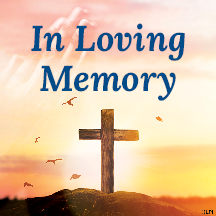Funeral Services
Funeral Planning
Have you planned your funeral?
Have you made such plans? We encourage you to do so. Like everything else related to our passing from this world to the next, it is a benefit to family and friends to do some planning of how you would like you funeral to be celebrated, and then communicate that to all who you think need to know: family, friends and parish.

About the Ceremony
Obviously you need to follow the rituals of the Church, but there is room for planning according to your wishes and as an expression of your faith. For example:
• What readings from scripture would you like? The Liturgy of the Word follows the Sunday format with an Old Testament reading, a responsorial Psalm, a New Testament reading, and a Gospel Reading. While there is a selection of readings appropriate for a funeral, any scripture passages you and your family might think appropriate can be used.
• What music would you like done (and perhaps, what music do you not want done)?
•Who would you like to read the scriptures, lead the Prayers of the Faithful,and bring the gifts to the altar?
Normally the pastor or one of the deacons can meet with family members with only a day or two of notice to make all these decisions. So, while final decisions don't have to be made far in advance (although they can be), some indication of your wishes is very helpful.
Call the parish office at 501-374-2794 for more information.
Cremation and Corporeal Burial
Why does the Church prefer the burial of the actual body of the deceased?
There are many reasons that I can think of for the burial of simply the cremated remains.
The Church has always held a preference for corporeal body. The body of a deceased loved one forcefully brings to mind the mystery of life and death and our belief that our human bodies are temples of the Holy Spirit and destined for future glory at the resurrection of the dead. In addition, the body which lies in death recalls the personal story of faith, the past relationships, and the continued spiritual presence of the deceased person.
This is the body once washed in baptism, anointed with the oil of salvation, and fed with the bread of life. This is the body whose hands clothed the poor and embraced the sorrowing. The human body is so inextricably associated with the human person that it is hard to think of a human person apart from his or her body. Thus, the Churchs reverence and care for the body grows out of a reverence and'concern for the person whom the Church now commends to the care of God.
The Order of Christian Funerals reflects a theology and a tradition in which burial of the body has been the principal manner of final disposition of the body. The long-standing practice of burying the body of the deceased in a grave or tomb as was Jesus, continues to be encouraged as a sign of Christian faith. However, owing to contemporary cultural interaction, the practice of cremation has become part of Catholic practice in the United States and other parts of the western world.
Disposition of the bodies of deceased Catholics by means of cremation is a fairly recent development. The 1917 Code of Canon Law forbade the practice, and this prohibition continued until 1963. While making allowance for cremation (as long as it was not chosen as a sign of denial of Christian teaching) the 1963 instruction Piam et constantem issued by the Holy Office urged that "the practice of burying"the bodies of the faithful is by all means to be kept." This 1963 concession is rovided for in the 1969 Ordo Exsequiarum, the Latin edition of the revised Catholic funeral ritual and was later incorporated into the 1983 Code of Canon Law in canon 1176: "The Church earnestly recommends that the pious custom of burying the bodies of the dead be observed; it does not, however, forbid cremation unless it has been chosen for reasons which are contrary to Christian teaching."
Although cremation is now permitted it does not enjoy the same value as burial of the body. Catholic teaching continues to stress the preference for burial of the body of the deceased. Likewise, the Church clearly prefers and urges that the body of the deceased be present for its funeral rites, since the presence of the human body better expresses the values which the Church affirms in its rites.
Sensitive to the economic, geographic, ecological, or family factors which on occasion make the cremation of a body the only feasible choice, however, the Administrative Committee of the National Conference of Catholic Bishops has recommended that the entire body of bishops that they request an indult from the Holy See permitting the presence of cremated remains during the full course of Catholic Funeral rites. Likewise, the Bishops' Committee on the Liturgy has'directed the Secretariat for the Liturgy to begin the preparation of additional rites and texts for the Order of Christian Funerals to provide for the presence of the remains of the cremated body.